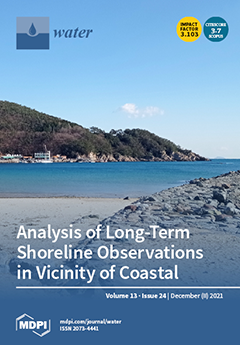Near real-time estimation of soil loss from river catchments is crucial for minimizing environmental degradation of complex river basins. The Chenab river is one of the most complex river basins of the world and is facing severe soil loss due to extreme hydrometeorological conditions, unpredictable hydrologic response, and complex orography. Resultantly, huge soil erosion and sediment yield (SY) not only cause irreversible environmental degradation in the Chenab river catchment but also deteriorate the downstream water resources. In this study, potential soil erosion (PSE) is estimated from the transboundary Chenab river catchment using the Revised Universal Soil Loss Equation (RUSLE), coupled with remote sensing (RS) and geographic information system (GIS). Land Use of the European Space Agency (ESA), Climate Hazards Group InfraRed Precipitation with Station (CHIRPS) data, and world soil map of Food and Agriculture Organization (FAO)/The United Nations Educational, Scientific and Cultural Organization were incorporated into the study. The SY was estimated on monthly, quarterly, seasonal, and annual time-scales using sediment delivery ratio (SDR) estimated through the area, slope, and curve number (CN)-based approaches. The 30-year average PSE from the Chenab river catchment was estimated as 177.8, 61.5, 310.3, 39.5, 26.9, 47.1, and 99.1 tons/ha for annual, rabi, kharif, fall, winter, spring, and summer time scales, respectively. The 30-year average annual SY from the Chenab river catchment was estimated as 4.086, 6.163, and 7.502 million tons based on area, slope, and CN approaches. The time series trends analysis of SY indicated an increase of 0.0895, 0.1387, and 0.1698 million tons per year for area, slope, and CN-based approaches, respectively. It is recommended that the areas, except for slight erosion intensity, should be focused on framing strategies for control and mitigation of soil erosion in the Chenab river catchment.
Full article





